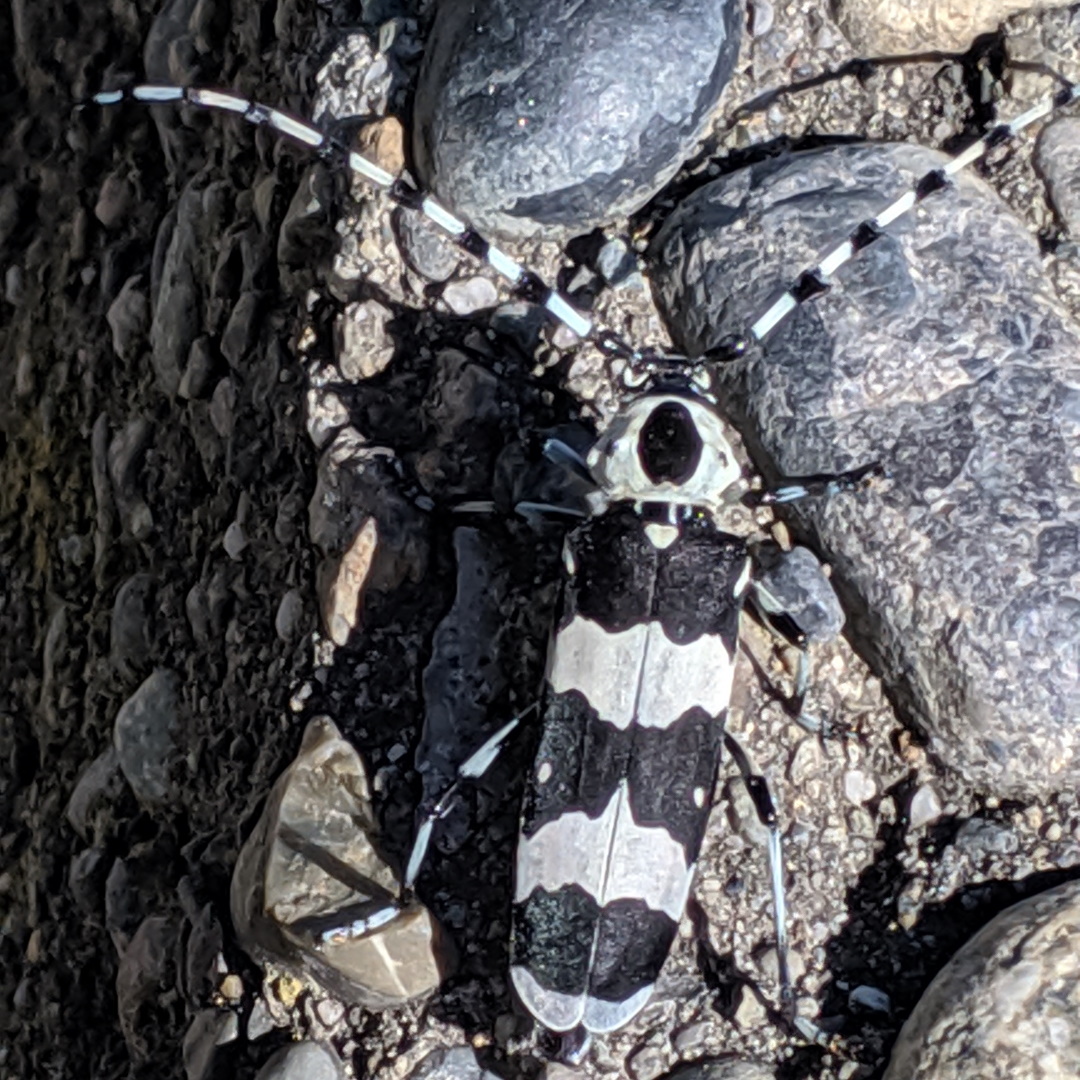The long horned beetle
Although quite menacing looking, the long horned beetle is not a real problem within our structures. I have come across these beetles only twice in my nearly 30 years of experience in the industry.
The first time I ran across them was about 25 years ago or so.
A house in Gig Harbor had a garage full of them. Upon inspection, of the house, I found that the homeowners had about a half a chord of firewood stacked in their garage! Since untreated, unprocessed (natural) wood is their habitat, it was a pretty quick diagnosis. After I reported my findings to my relieved customer, we set to work re-locating all of the firewood to an area well away from the house. Since they often used their fireplace, I advised the homeowner to bring in the logs, individually, that would be immediately placed into the fire. I followed this up with a thorough fogging of the garage area. “problem” solved!
The second (and only other) time I encountered these beetles was about 15 years ago.
This time they were actually coming out of the drywall of a brand new home. Now this was rare, and I didn’t believe it at first. But when I went out to the property for inspection, I saw several fairly large holes riddled in a header beam inside the home. The homeowner had collected a sample of the Long Horned Beetle, and as you can see for yourself, there is no mistaking it. After doing some research, I came up with a plan A and a plan B that I presented to the homeowner. I often like to come up with a couple of plans when we are dealing with an “unconventional” and rare occurrence.
Plan A
This plan’s answer to elimination/extermination offered a finite solution but was very invasive. I figured since the house was brand new, the homeowner probably had an option to inform the builder of this situation and have them remove the drywall and take out the infested beam. We had no way of knowing if any of the other structural materials were infested, but this was a start and a solution to this particular problem area.
Plan B
I could drill into the drywall all around the header beam and inject a borate product which would absorb into the header beam and hopefully take care of the situation. There were no guarantees and it would not help any other areas if these beetles happened to re-surface. I left my plans with the homeowners for them to discuss. A couple of days later, the homeowners reported to us that they had been in discussions with the builder. The builder was willing to pay for our treatment and then go in and finish over the holes that we needed to drill, as well as the exit holes caused by the beetles. If this treatment did not have the desired results we were looking for (complete extermination) then they would remove and replace all of the infested materials.
The next day I went out to the house (which incidentally? Was also in Gig Harbor) and executed Plan B. Success!!!!! We implemented a preventive maintenance program on a quarterly basis thereafter. Our main focus was exterior ground crawling insects, but it kept us available to keep an eye out for any evidence of long horned beetle existence whatsoever. They’ve never had another issue with them period.




